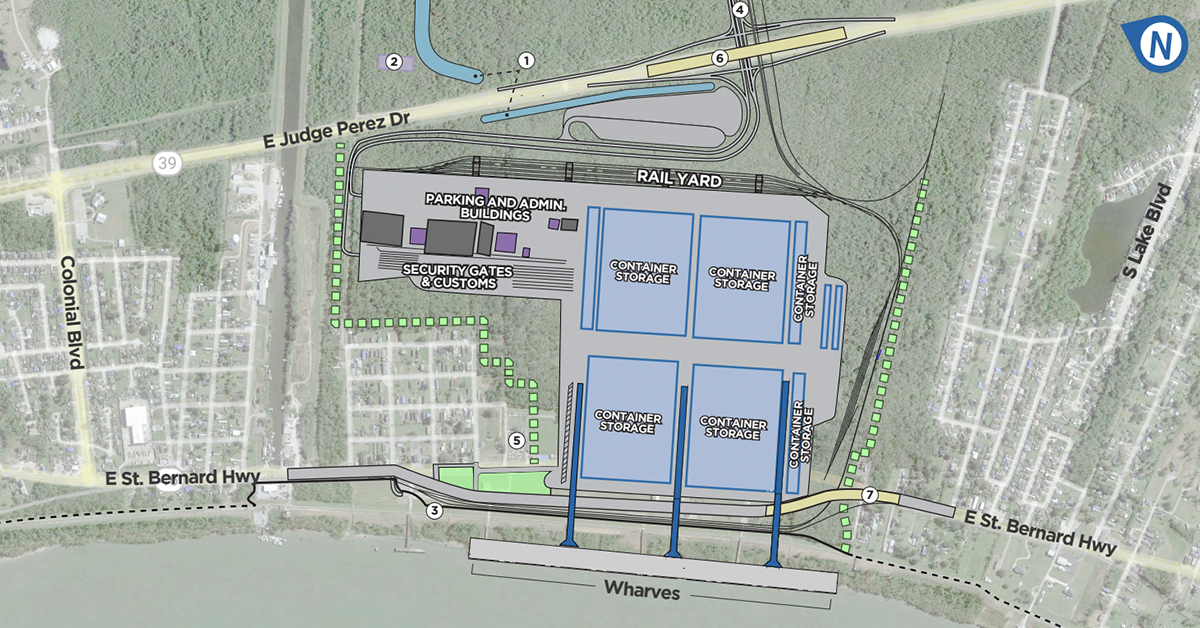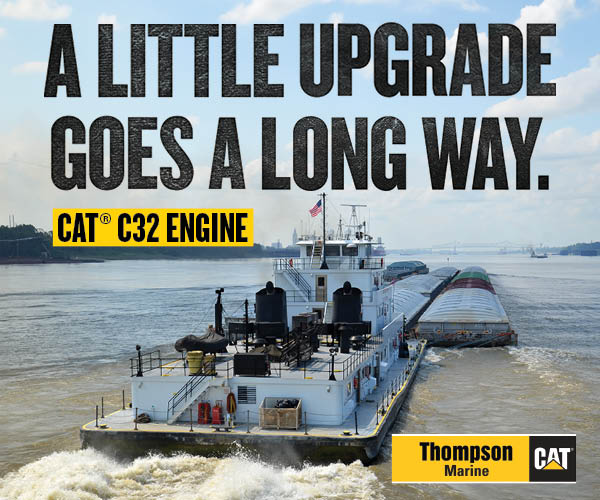The New Orleans Engineer District will hold a public hearing May 27 from 6 to 9 p.m. at the Val Reiss Recreation Complex in Chalmette, La., to field comments on the permit application for the proposed Louisiana International Terminal (LIT), a new container terminal planned for Violet, La.
“The purpose of the hearing is to acquire information or evidence which will be considered in evaluating the permit application and to afford the public with an opportunity to present their views, opinions and information on such permit action,” the New Orleans District stated in the announcement.
A representative from the district will make an opening statement to outline the purpose of the meeting. In addition, one or more representatives from the Port of New Orleans will offer details about the project. The port’s presentation will be available prior to the meeting online at www.louisianainternationalterminal.com. After that, attendees will be able to submit written and spoken statements.
The New Orleans District will receive written comments from May 27 through June 6. Emailed comments should be sent to shelby.barrett@usace.army.mil, and comments sent by physical mail should be postmarked before June 6 and sent to U.S. Army Corps of Engineers, New Orleans District, Attn: CEMVN-RGE, 7400 Leake Avenue, New Orleans, LA 70118.
“All comments received in response to this notice, as part of the hearing record or submitted in response to the preview public notice will be considered equally by the [district],” the announcement from the New Orleans District stated. “If you have already submitted comments, there is no need to resubmit them as part of this proceeding.”
The Port of New Orleans submitted a permit application for the new container terminal on December 16, with an initial comment period ending on January 15. According to the permit application, the terminal will include a 3,600-linear-foot wharf on the Mississippi River able to moor Ultra Large Container Vessels, which can carry in excess of 14,000 TEUs (20-foot equivalent units) and stretch more than 1,300 feet long. Containers will be offloaded and stacked on site and transported via road or rail.
“Construction would also include realignment of East St. Bernard Highway and the Norfolk-Southern railroad track segment, a rail spur, access roads, a retention pond, pump station, Entergy substation, administrative buildings and other appurtenant structures within the project area,” according to the December 16 announcement of the permit application.
Construction of the terminal, as proposed, would involve the excavation of 3.3 million cubic yards of material on site and the placement of 59,774 cubic yards of asphalt, 578,496 cubic yards of concrete, 119,986 cubic yards of gravel and 5.4 million cubic yards of sand dredge from the Mississippi River.
“As proposed, the project would permanently impact 428 acres of jurisdictional wetlands and temporarily impact up to 388 acres of non-vegetated water bottoms in the Mississippi River,” the announcement stated.
The application, including maps and schematics, is available online at www.mvn.usace.army.mil by searching for MVN-2021-00270-ESG.
The permit application falls under section 404 of the Clean Water Act and/or section 10 of the Rivers and Harbors Act of 1899. According to the project timeline published on the LIT website, a decision on the permit application is expected this year with construction to begin shortly thereafter.
“We anticipate receiving all necessary permits by as early as this summer,” said Kimberly Curth, press secretary for the Port of New Orleans. “Construction is expected to start later this year.”
If that timeline holds true, the port expects the first phase of the terminal to come online in 2028.
The port currently operates the Napoleon Avenue Container Terminal upriver in New Orleans, but the Crescent City Connection bridge limits the size of vessels able to call on it. The proposed site in Violet, 12 miles downriver, would eliminate air draft restrictions and accommodate larger ships. Various neighborhood groups, though, have objected to the addition of an industrial complex to the area, the realignment of a portion of the river road and the increased truck and rail traffic.




